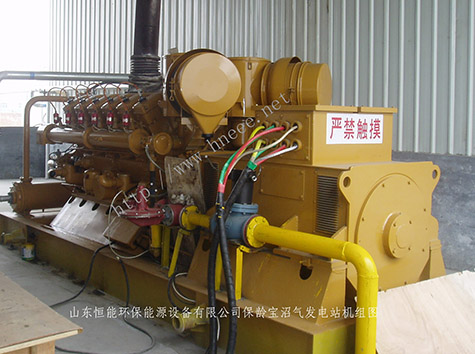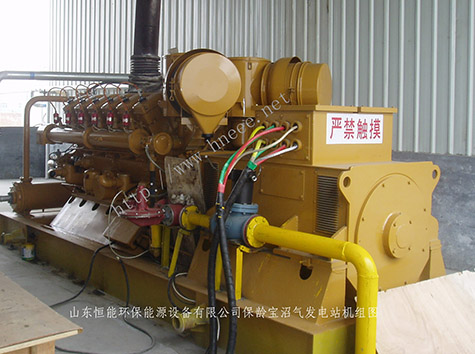焦化气发电机组:焦化各工序10大节能技术
1) 焦炉自动加热控制技术
1) Automatic Heating Control Technology for Coke Oven
技术简介:针对焦炉加热过程调控复杂、加热煤气消耗量大、碳排放高、氮氧化物生成多等难题,应用炼焦过程智能测温加热控制、焦炉边火道热工控制、炼焦终温反馈调节及焦炉源头减氮控制技术,可有效解决焦炉人工控温火道测控精度差、调节滞后的问题,实现焦饼中心温度远程自动准确测量控制,降低焦炉烟气氮氧化物排放。应用情况:技术在鞍钢等多家钢铁企业推广应用。以1000万吨焦炭产能为例,年可节省标煤约6.2万吨、1357吨NOx、1561吨SO2。
Technical Introduction: In response to the complex control of the heating process in coke ovens, high consumption of heating gas, high carbon emissions, and the generation of multiple nitrogen oxides, intelligent temperature measurement and heating control, thermal control of the coke oven side flue, feedback adjustment of the final temperature of coke oven, and nitrogen reduction control technology at the source of coke oven are applied to effectively solve the problems of poor measurement and control accuracy and lagging adjustment of manual temperature control flue gas in coke ovens. This enables remote automatic and accurate measurement and control of the center temperature of coke cake, reducing nitrogen oxide emissions from coke oven flue gas. Application situation: The technology has been promoted and applied in multiple steel enterprises such as Ansteel. Taking the production capacity of 10 million tons of coke as an example, it can save about 62000 tons of standard coal, 1357 tons of NOx, and 1561 tons of SO2 annually.
2) 焦炉炭化室压力自动调节技术技术简介:根据每孔炭化室煤气发生量变化,实时调节桥管水封阀盘的开度,实现整个结焦周期内炭化室压力调节,避免在装煤和结焦初期因炭化室压力过大产生煤气及烟尘外泄,并减少炭化室内荒煤气窜漏至燃烧室,实现装煤烟尘治理和焦炉压力稳定。同时技术可调控压力避免吸入空气造成能耗上升。应用情况:技术在多家钢铁企业应用。可实现炼焦耗热量降低2%以上,减少炭化室压力波动造成焦炉冒烟、炭化室炉墙窜漏以及烟尘逸散等环境问题,工序能耗下降 2~4kgce/t-焦。
2) Introduction to Automatic Pressure Adjustment Technology for Coke Oven Carbonization Chamber: Based on the changes in the amount of gas generated in each hole of the carbonization chamber, the opening of the bridge tube water seal valve disc is adjusted in real time to achieve pressure adjustment of the carbonization chamber throughout the coking cycle. This avoids the leakage of coal gas and smoke due to excessive pressure in the carbonization chamber during coal loading and early coking, and reduces the leakage of raw gas from the carbonization chamber to the combustion chamber, achieving coal loading smoke control and coke oven pressure stability. At the same time, technology can regulate pressure to avoid energy consumption increase caused by inhaling air. Application situation: The technology has been applied in multiple steel enterprises. It can achieve a reduction of more than 2% in coking heat consumption, reduce environmental problems such as coke oven smoke, wall leakage, and smoke emission caused by pressure fluctuations in the carbonization chamber, and reduce process energy consumption by 2-4 kgce/t coke.
3) 焦炉用关键功能耐火材料及应用技术简介:包括“表面复合陶瓷成型技术、高导热硅质材料制备技术及窑炉热修补技术”等系列技术。表面复合陶瓷成型技术应用实现焦炉炉门结构大型化,表面光滑,解决了原用小型砖材料的结构不稳定,密封不严气体外溢的环境污染问题。高导热硅砖替代传统的硅砖耐火材料,导热效率显著提高,提高炭化室硅砖的导热性,并保持了其他良好的物理化学性能。应用情况:相关技术在宝钢、鞍钢等多家企业应用。以某钢4座50孔的焦炉为例,应用高导热硅砖材料,热效率可提高5%。
3) Introduction to key functional refractory materials and application technologies for coke ovens: including a series of technologies such as "surface composite ceramic forming technology, high thermal conductivity silicon material preparation technology, and kiln thermal repair technology". The application of surface composite ceramic forming technology realizes the large-scale structure of coke oven doors, with smooth surfaces, solving the environmental pollution problems caused by unstable structure and inadequate sealing of small brick materials. High thermal conductivity silica bricks replace traditional silica brick refractory materials, significantly improving thermal conductivity efficiency, enhancing the thermal conductivity of carbonization chamber silica bricks, and maintaining other good physical and chemical properties. Application situation: Relevant technologies have been applied in multiple enterprises such as Baosteel and Ansteel. Taking four 50 hole coke ovens of a certain steel as an example, the application of high thermal conductivity silica brick material can increase thermal efficiency by 5%.
4) 焦炉上升管荒煤气余热高效回收技术技术简介:将原有的焦炉上升管替换为上升管换热器,约800℃的荒煤气流过上升管换热器将热量传递给强制循环的传热媒介,例如循环水、导热油,生产饱和蒸汽、过热蒸汽、高温导热油输送至热用户利用,实现荒煤气余热回收。应用情况:焦炉上升管回收荒煤气余热技术已在宝钢、首钢、包钢、韩国现代钢铁等一批大型企业,百余座焦炉上得到应用。以某钢企焦化厂生产低压饱和蒸汽为例,吨焦产蒸汽量达80kg以上,工序能耗降低 7kgce/t-焦以上。该技术尚有改善空间。
4) Introduction to the high-efficiency recovery technology of waste heat from coke oven riser: The original coke oven riser is replaced with a riser heat exchanger, and the waste gas at about 800 ℃ flows through the riser heat exchanger to transfer heat to the forced circulation heat transfer medium, such as circulating water and heat transfer oil, to produce saturated steam, superheated steam, and high-temperature heat transfer oil, which are transported to heat users for utilization, achieving waste heat recovery from coke oven riser. Application situation: The technology of recovering waste heat from raw gas through coke oven riser has been applied in a number of large enterprises such as Baosteel, Shougang, Baosteel, and Hyundai Steel in South Korea, with over a hundred coke ovens. Taking the production of low-pressure saturated steam in a coking plant of a certain steel enterprise as an example, the steam production per ton of coke reaches over 80kg, and the process energy consumption is reduced by more than 7kgce/t-coke. There is still room for improvement in this technology.
5) 初冷器上段换热回收荒煤气低温余热技术技术简介:将传统两段横管式结构初冷器设计成三段换热,分别是上段,中段和下段,供水分别是热水、循环水和低温水。热水是来自于制冷机组或通风采暖设施,温度63~65℃,泵送至初冷器上段,吸收荒煤气的热量后温度升高至73~75℃,后经管路送至制冷机组或通风采暖设施,荒煤气从81℃降温至79~75℃。荒煤气进一步通过初冷器中段和下段被降温至约 21℃。该技术可在绝大部分的新建焦化企业内进行推广运用。应用情况:在山西立恒焦化、铜陵泰富、新泰正大焦化等企业应用。以年产100万吨焦炭为例,余热回收折合低压蒸汽量为1.20 万~1.80万吨,并显著节约循环水用量。
5) Introduction to the technology of recovering low-temperature waste heat from raw gas through heat exchange in the upper section of the primary cooler: The traditional two-stage transverse tube structure primary cooler is designed as a three-stage heat exchange system, consisting of an upper section, a middle section, and a lower section, with hot water, circulating water, and low-temperature water supplied respectively. Hot water comes from refrigeration units or ventilation and heating facilities, with a temperature of 63-65 ℃. It is pumped to the upper section of the primary cooler, where it absorbs the heat from the raw gas and rises to 73-75 ℃. It is then sent through pipelines to refrigeration units or ventilation and heating facilities, where the raw gas is cooled from 81 ℃ to 79-75 ℃. The raw gas is further cooled to about 21 ℃ through the middle and lower sections of the primary cooler. This technology can be promoted and applied in the vast majority of newly built coking enterprises. Application: Applied in enterprises such as Shanxi Liheng Coking, Tongling Taifu, and Xintai Zhengda Coking. Taking the annual production of 1 million tons of coke as an example, the waste heat recovery is equivalent to 12000 to 18000 tons of low-pressure steam, and significantly saves the amount of circulating water used.
6) 焦炉烟道废气余热回收工艺技术简介:焦炉烟气进入余热锅炉换热后排入烟囱,产生低压蒸汽。辅助设备布置在锅炉下方节省占地,引风机根据主烟道压力变频,给水二冲量自动调节,汽包液位稳定,汽包压力自动调节,蒸汽压力稳定,换热器采用翅片管+热管式避免低温腐蚀。应用情况:吨焦可产0.6MPa饱和蒸汽 0.05~0.1t,投资回收年≤2年。吨焦减少CO2约15.5kg、SO2约0.5kg、NOX约0.24kg、烟尘约4.5kg。7) 干熄焦高温超高压/超高温超高压再热锅炉发电技术技术简介:在干熄焦余热发电系统中加入中间一次再热系统,利用进入干熄焦锅炉的高温循环气体的高品位热能,提高整体循环热效率。此技术的中间一次再热系统是利用锅炉产生的新蒸汽在汽轮机内高压缸膨胀做功后,高压排汽进入到锅炉的再热器中,提高再热蒸汽的过热温度,再热蒸汽出口温度与主蒸汽温度相当,然后将高温的再热蒸汽送到汽轮机低压缸中继续膨胀做功。高温超高压/超高温超高压加中间一次再热汽轮机的内效率高,热力系统热效率高,中间再热技术同时提升汽轮机末级叶片干度及机组稳定运行,本项技术可充分利用干熄焦余热,提高余热发电经济性。应用情况:综合发电效率相比同规模高温高压(9.8Mpa,540℃)发电机组提升 0~13%。以某厂干熄焦处理能力210t/h的项目为例,年发电时间 8000小时,年发电量增加3360万 kW·h 以上,年节约标煤约0.413万吨;年发电收益增加1680万元(按0.5 元/kW·h计算)。
6) Introduction to the technology of recovering waste heat from coke oven flue gas: The coke oven flue gas enters the waste heat boiler for heat exchange and is discharged into the chimney, producing low-pressure steam. The auxiliary equipment is arranged below the boiler to save space. The induced draft fan is variable frequency according to the main flue pressure, and the water supply second impulse is automatically adjusted. The steam drum liquid level is stable, the steam drum pressure is automatically adjusted, and the steam pressure is stable. The heat exchanger adopts a finned tube+heat pipe type to avoid low-temperature corrosion. Application scenario: Each ton of coke can produce 0.6MPa saturated steam of 0.05~0.1t, with an investment payback period of ≤ 2 years. The reduction of CO2 by about 15.5kg, SO2 by about 0.5kg, NOX by about 0.24kg, and smoke by about 4.5kg per ton of coke. 7) Introduction to the power generation technology of dry quenching high-temperature ultra-high pressure/ultra-high temperature ultra-high pressure reheating boiler: Adding an intermediate reheating system to the dry quenching waste heat power generation system, utilizing the high-grade thermal energy of the high-temperature circulating gas entering the dry quenching boiler, and improving the overall circulation thermal efficiency. The intermediate reheating system of this technology utilizes the new steam generated by the boiler to expand and do work in the high-pressure cylinder of the steam turbine. The high-pressure exhaust steam enters the reheater of the boiler to increase the superheated temperature of the reheated steam. The outlet temperature of the reheated steam is equivalent to the main steam temperature, and then the high-temperature reheated steam is sent to the low-pressure cylinder of the steam turbine to continue expanding and doing work. The high temperature and ultra-high pressure/ultra-high temperature and ultra-high pressure combined with intermediate reheating turbine has high internal efficiency and thermal system thermal efficiency. The intermediate reheating technology simultaneously improves the dryness of the last stage blades of the turbine and the stable operation of the unit. This technology can fully utilize the waste heat from dry quenching and improve the economic efficiency of waste heat power generation. Application scenario: The comprehensive power generation efficiency is improved by 0-13% compared to high-temperature and high-pressure (9.8Mpa, 540 ℃) generator sets of the same scale. Taking a project with a dry quenching capacity of 210t/h in a certain factory as an example, the annual power generation time is 8000 hours, the annual power generation increases by more than 33.6 million kW · h, and the annual savings of standard coal are about 0.413 million tons; The annual power generation revenue increased by 16.8 million yuan (calculated at 0.5 yuan/kW · h).
8) 焦炉循环氨水余热回收技术简介:焦炉循环氨水温度达70~80℃,循环量与余热资源量大。通过溴化锂制冷机组以水为制冷剂,溴化锂水溶液为吸收剂,利用水在高真空条件下低沸点汽化特征,回收循环氨水热量实现制冷。应用情况:行业应用比例约10%,降低工序能耗0.5~1kgce/t-焦。
8) Introduction to the technology of recovering waste heat from circulating ammonia water in coke ovens: The temperature of circulating ammonia water in coke ovens reaches 70-80 ℃, and the circulation volume and waste heat resources are large. By using water as the refrigerant and lithium bromide aqueous solution as the absorbent in a lithium bromide refrigeration unit, the low boiling point vaporization characteristics of water under high vacuum conditions are utilized to recover the heat of circulating ammonia water for refrigeration. Application situation: The industry application ratio is about 10%, reducing process energy consumption by 0.5-1kgce/t coke.
9) 节能热泵蒸氨技术技术简介:采用第二类吸收式热泵机组替代常规蒸氨分缩器,回收蒸氨塔塔顶氨汽的潜热,并进行温度提质后加热循环热水,用于加热塔底废水作为部分热源给蒸氨塔供热,减少蒸汽消耗。与常规蒸氨工艺相比,热泵蒸氨工艺用热泵机组、热水再沸器、循环热水泵、汽液分离器、氨水回流泵,以及膨胀槽等组成的塔顶余热回收系统和氨水回流系统代替常规蒸氨工艺的分缩器。应用情况:较之目前众多焦化企业的常规蒸氨,该技术减少约41%的低压蒸汽消耗,减少约13%的循环水用量。
9) Introduction to energy-saving heat pump ammonia distillation technology: The second type of absorption heat pump unit is used to replace the conventional ammonia distillation condenser, recover the latent heat of ammonia vapor at the top of the ammonia distillation tower, and heat the circulating hot water after temperature upgrading. It is used to heat the wastewater at the bottom of the tower as part of the heat source to supply heat to the ammonia distillation tower, reducing steam consumption. Compared with the conventional ammonia distillation process, the heat pump ammonia distillation process uses a tower top waste heat recovery system and ammonia reflux system composed of a heat pump unit, a hot water reboiler, a circulating hot water pump, a vapor-liquid separator, an ammonia reflux pump, and an expansion tank to replace the condenser of the conventional ammonia distillation process. Application situation: Compared with the conventional ammonia distillation in many coking enterprises, this technology reduces low-pressure steam consumption by about 41% and circulating water consumption by about 13%.
10)蒸汽法负压粗苯蒸馏技术技术简介:负压粗苯蒸馏技术,是通过真空装置维持脱苯塔内负压,以降低溶液中各组分的沸点,从而达到降低蒸馏温度、减少热量消耗的目的,同时采取优化粗苯操作参数、改进脱苯塔塔盘型式,能够有效解决焦化粗苯蒸汽耗量高的难题,节能降耗明显。应用情况:可较正压粗苯蒸馏工艺节省50%的低压蒸汽消耗、25%的循环水用量,运行成本降低16%。
10) Introduction to steam method negative pressure crude benzene distillation technology: Negative pressure crude benzene distillation technology maintains negative pressure in the benzene removal tower through a vacuum device to reduce the boiling points of various components in the solution, thereby achieving the goal of reducing distillation temperature and heat consumption. At the same time, optimizing the operating parameters of crude benzene and improving the tray type of the benzene removal tower can effectively solve the problem of high steam consumption of coking crude benzene, and save energy and reduce consumption significantly. Application situation: It can save 50% of low-pressure steam consumption and 25% of circulating water consumption compared to the positive pressure crude benzene distillation process, and reduce operating costs by 16%.
本文由 焦化发电机组 情奉献.更多有关的知识请点击 //www.gz-yanye.com/ 真诚的态度.为您提供为全面的服务.更多有关的知识我们将会陆续向大家奉献.敬请期待.
This article is dedicated to the coking generator unit For more related knowledge, please click //www.gz-yanye.com/ Sincere attitude To provide you with comprehensive services We will gradually contribute more relevant knowledge to everyone Coming soon.
 在线咨询
在线咨询 官方二维码
官方二维码




 当前位置:
当前位置: 2025.10.07
2025.10.07







